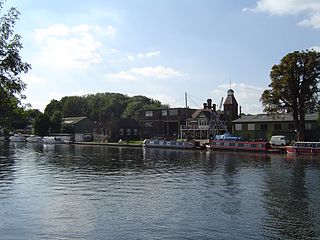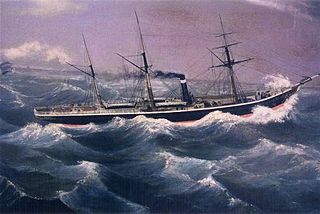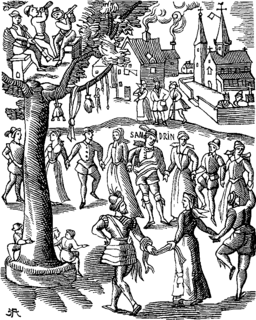
Ceremonial ship launching is the process of transferring a vessel to the water. It is a naval tradition in many cultures, dating back thousands of years. It has been observed as a public celebration and a solemn blessing.

SS Princess Alice, formerly PS Bute, was a passenger paddle steamer that sank on 3 September 1878 after a collision with the collier Bywell Castle on the River Thames. Between 600 and 700 people died, all from Princess Alice, the greatest loss of life of any British inland waterway shipping accident. No passenger list or headcount was made, so the exact figure of those who died has never been known.

The PS General Slocum was a sidewheel passenger steamboat built in Brooklyn, New York, in 1891. During her service history, she was involved in a number of mishaps, including multiple groundings and collisions.

The Lexington was a paddlewheel steamboat that operated along the Atlantic coast of the Northeastern United States between 1835 and 1840, before sinking in January 1840 due to an onboard fire. Commissioned by industrialist Cornelius Vanderbilt, the ship was considered one of the most luxurious steamers in operation, and began service on a route between New York City and Providence, Rhode Island. In 1837, the Lexington switched to the route between New York and Stonington, Connecticut, the terminus of the newly built railroad from Boston. Vanderbilt sold the ship to his competitor, the New Jersey Steamship Navigation and Transportation Company, in December 1838 for $60,000, at which time the Lexington was reputedly the fastest steamer on Long Island Sound.

General Grant was a 1,005-ton three-masted barque built in Maine in the United States in 1864 and registered in Boston, Massachusetts. She was named after Ulysses S. Grant and owned by Messers Boyes, Richardson & Co. She had a timber hull with a length of 179.5 ft, beam of 34.5 ft and depth of 21.5 ft. While on her way from Melbourne to London, General Grant crashed into a cliff on the west coast of main island of the Auckland Islands of New Zealand, and subsequently sank as a result. Sixty-eight people drowned and only 15 people survived.

SS Daphne was a ship which sank moments after her launching at the shipyard of Alexander Stephen and Sons in Govan, Glasgow, Scotland, on 3 July 1883.
RNLB Mona was a Watson-Class lifeboat based at Broughty Ferry in Scotland, that capsized during a rescue attempt, with the loss of her entire crew of eight men. The Mona was built in 1935, and, in her time, saved 118 lives.
Pelican was a private man of war commissioned by a Liverpool merchant for offensive operations against French commerce following the outbreak of the French Revolutionary War in February 1793. Pelican sank in bad weather on March 20, 1793.
RNLB Mary Stanford was a Liverpool-class lifeboat which capsized in Rye Harbour in 1928.

Rosalie Ida Straus was an American homemaker and wife of the co-owner of the Macy's department store. She and her husband Isidor died on board the RMS Titanic.

Platt's Eyot or Platt's Ait is an island on the River Thames at Hampton, in the London Borough of Richmond upon Thames, England, on the reach between Molesey Lock and Sunbury Lock.

SS Admella was an Australian passenger steamship that was shipwrecked on a submerged reef off the coast of Carpenter Rocks, south west of Mount Gambier South Australia, in the early hours of Saturday 6 August 1859. Survivors clung to the wreck for over a week and many people took days to die as they glimpsed the land from the sea and watched as one rescue attempt after another failed.
James Henry Haylett (1825–1907) was the most famous lifeboatman of his age. Decorated by King Edward VII with the RNLI gold medal for his efforts in the 1901 Caister lifeboat disaster, which claimed the lives of nine men. Amongst those lost were two of his sons, Aaron and James Haylett, Charles Bonney George and his grandson Harry Knights.

SS London was a British steamship which sank in the Bay of Biscay on 11 January 1866. The ship was travelling from Gravesend in England to Melbourne, Australia, when she began taking in water on 10 January, with 239 persons aboard. The ship was overloaded with cargo, and thus unseaworthy, and only 19 survivors were able to escape the foundering ship by lifeboat, leaving a death toll of 220.

The lifeboats of the RMS Titanic played a crucial role in the disaster of 14–15 April 1912. One of the ship's legacies was that she had 20 lifeboats that could only accommodate 1,178 people, despite the fact that there were approximately 2,208 on board. RMS Titanic had a maximum capacity of 3,547 passengers and crew.
The Masbrough Independent Chapel was an Independent or Congregationalist chapel in the Masbrough district of Rotherham, from the 18th century until the 1970s, at which point it became part of the United Reformed Church.
The Victoria steamboat disaster was a Canadian maritime disaster where on May 24, 1881, the sternwheel passenger steamboat SS Victoria, capsized and sank in the Thames River near what is today Greenway Off-Leash Dog Park in Kensal Park, London, Ontario. The tragedy was one of the worst maritime disasters in Canada at the time, and made major headlines in places as far as England and the United States due to the severity of the disaster.

The Staten Island boat graveyard is a marine scrapyard located in the Arthur Kill in Rossville, near the Fresh Kills Landfill on the northern shore of Staten Island, New York. The place has been recognized as an official dumping ground for old wrecked tugboats, barges and decommissioned ferries. It is known by many other names including the Witte Marine Scrap Yard, the Arthur Kill Boat Yard, and the "Tugboat Graveyard." Its official name as of 2014 is the Donjon Iron and Metal Scrap Processing Facility.



















